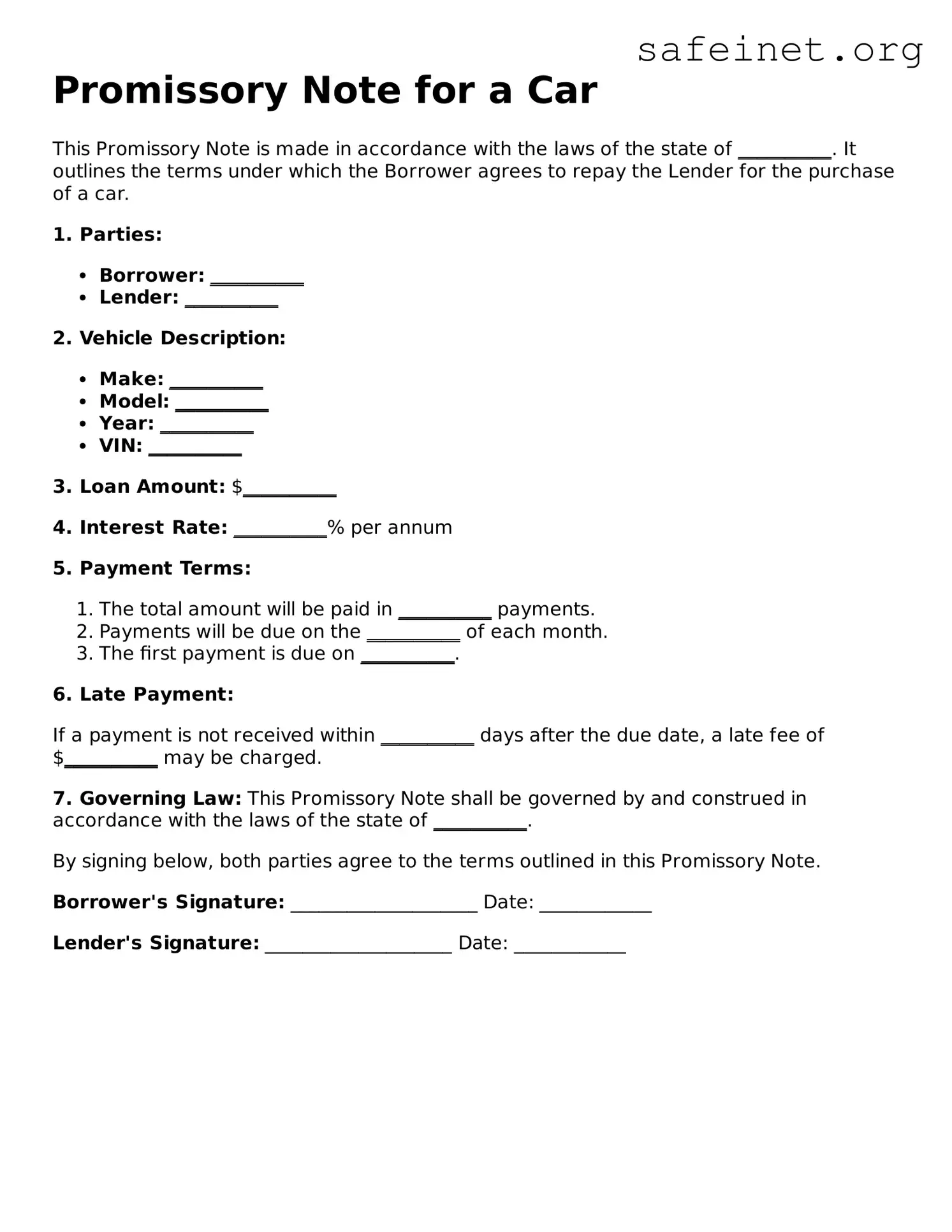The Promissory Note for a Car form bears similarities to the Car Loan Agreement. Both documents serve to outline the borrower's promise to repay the borrowed money for the vehicle. These agreements usually detail the loan amount, interest rate, repayment schedule, and any penalties for late payments. By defining the terms clearly, both documents help protect the lender’s interests while informing the borrower of their obligations.
Another document that mirrors aspects of the Promissory Note is the Auto Lease Agreement. Unlike a loan, an auto lease agreement allows the borrower to use the vehicle for a specified period without the intention of ownership. However, similar to a promissory note, this agreement also specifies payment terms, including monthly lease amounts and penalties for missed payments, thus establishing a formal financial commitment.
The Retail Installment Sales Contract is another similar document. This contract is often used when purchasing a car where financing is involved. It not only lists the purchase price and down payment but also covers the payment schedule, interest rates, and personal obligations of the buyer. Like a promissory note, this document formalizes the financial relationship between the buyer and the lender.
The Secured Loan Agreement is also relevant because it involves borrowing against collateral—in this case, the car itself. This agreement, like a promissory note, details the terms of the loan, including the borrower's obligations and the lender's rights in the event of default. The security interest in the vehicle provides an extra layer of protection for the lender, paralleling the core function of the promissory note.
The Conditional Sales Contract shows another similarity, as it allows the buyer to take possession of the vehicle while making payments. In essence, though the buyer uses the car, full ownership does not transfer until the total purchase price is paid. This conditional arrangement mirrors the promise of repayment found in a promissory note, reinforcing the financial commitment made by the buyer.
Next, consider the Loan Application Form, which initiates the borrowing process. It asks for vital information such as income, credit history, and employment status, enabling the lender to assess the borrower's ability to repay. Though not a financial commitment itself, this document is the precursor to a promissory note, leading to the establishment of formal repayment terms.
Then there’s the Vehicle Title, which signifies ownership of the vehicle in question. When a promissory note is created, the title often serves as collateral for the loan, providing the lender an avenue to reclaim the vehicle if the borrower defaults. Thus, while the title itself is not a financial agreement, it underlines the obligations outlined in the promissory note.
The Bill of Sale, although more transactional, holds noteworthy similarities as it documents the sale of the vehicle and the terms agreed upon between the seller and buyer. It may include payment terms, much like a promissory note, establishing a clear mutual understanding of the financial exchange involved in acquiring the car.
Finally, the Payment Plan Agreement is akin to a promissory note as it explicitly defines the repayment terms agreed upon by both parties. This document outlines the payment amount, schedule, and any consequences for late payments, essentially guiding the borrower through their financial commitments similar to how a promissory note delineates the borrower's obligations for repaying the car loan.
